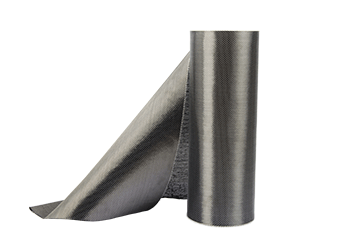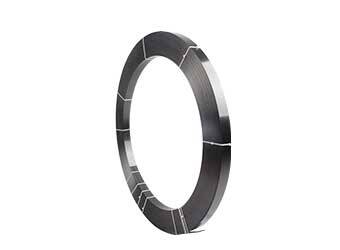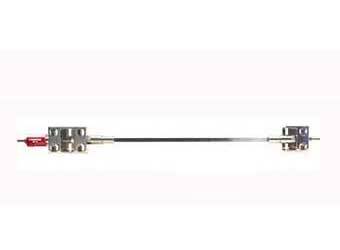Solutions
Horse Construction offers full range of structural strengthening materials with technical supports, documentation supports, products supports, project supports.
Principles for Optimum Selection of Reinforcement Schemes for In-service Bridges
Reasons for the reinforcement of in-service bridges
According to statistics, there are mainly the following reasons for the need to strengthen the bridges in service:
1. Improper design. Incorrect structural design or insufficient considerations caused the bridge to fail to meet actual requirements.
2. Problems occurred during the construction process. For example, excessive water consumption when pouring concrete results in insufficient concrete strength and a large amount of shrinkage and creep. The wrong layout and position of the steel bars in beams, columns, and slabs make the steel protection layer thickness insufficient or unable to exert the strength of the steel bars. Improper configuration of pipeline equipment, passing through beams, resulting in the truncation of the stressed steel bars and the area of the compression zone of the concrete is too small, making the actual strength of the structure less than the design value. Premature removal of the mold or premature removal of the support can also easily cause cracks or damage to the components.
3. The use requirements or the applied load have changed. When the purpose of the bridge is changed or the applied load changes, it is possible that the design bearing capacity cannot meet the requirements of the new function.
4. The aging of the bridge. As the service life increases, the steel bars and concrete in the bridge structure will gradually age under external influences (such as acid rain, salt damage, chemical corrosion, etc.), resulting in a decrease in bearing capacity.
5. Disastrous effects such as fires, earthquakes, and wars. The high temperature generated in the fire will make the concrete in the bridge brittle and burst and the strength of the steel bar will decrease. Earthquakes and wars will also cause very serious damage to the structure, causing the structure to fail to meet the needs of use and safety.
6. Modification of design specifications and improvement of technical standards.
The Significance of Optimizing the Reinforcement Scheme of the In-service Bridge
The rapid development of modern transportation, the increase of traffic volume and the improvement of load levels have caused many original bridges to fail to meet the current requirements. To meet the long-term growth demand and safe and smooth roads, it is necessary to take corresponding measures to improve the capacity and load level. Therefore, a reinforcement plan must be determined, but there are many reinforcement plans. How to determine that the selected bridge reinforcement plan conforms to the local actual situation and better meets the needs of the owner, quickly optimizes each plan, and provides a relatively better reinforcement plan is of great significance to the economic requirements.
For the reinforcement of old bridges, from the current stage, the comparison and selection of reinforcement schemes lack a set of more rigorous economic evaluation and project decision-making methods. However, as an investment legal person, there is a set of relatively advanced, scientific and complete evaluation methods for decision-making, which will have a very significant significance in the project implementation process and the economic effects after the implementation process.
General provisions of the bridge reinforcement code
During the operation and use of the bridge, large damage may occur due to some reasons, and the bearing capacity may be reduced. It is also possible that with the increasingly busy traffic, the load-bearing capacity and traffic capacity of the bridge cannot meet the requirements. To solve the problem of insufficient bearing capacity and passing capacity of the service bridge, there are usually two options to choose from. One is the reconstruction method of rebuilding a new bridge after the service bridge is demolished and the replacement method of replacing all the main girder of the service bridge and erecting a new girder with a high load level. The other is to use various reinforcement measures, or in addition to adopting reinforcement measures, while widening the service bridge reinforcement method. The construction of the former is time-consuming and laborious, and the cost is relatively high. The latter requires a lot of cost savings, generally only 1/10 to 3/10 of the construction of a new bridge. Obviously, the reinforcement and maintenance of bridges has very obvious practical value.
Compared with newly-built bridge projects, the repair and reinforcement construction of in-service bridges has many characteristics. First of all, the standards for maintenance and reinforcement are often different from those used in design. Due to the existence of buildings in service and the different requirements for future service life, the standards for bridge reinforcement or reconstruction cannot be exactly the same as those used in the design. For example, the load level of the service bridge is assumed to be car -13, and after reinforcement, its load level may be increased to car -20. Therefore, under the premise of ensuring driving safety, according to the specific conditions of the use requirements and durability requirements, the relevant standard requirements for reinforcement or reconstruction should be correctly grasped and proposed. Secondly, the maintenance and reinforcement work is more difficult than when it was newly built. The work of repairing and strengthening bridges and buildings must be carried out under conditions that do not hinder traffic. Therefore, it often increases a lot of difficulties. Even if it makes the construction difficult, the traffic must be taken care of as much as possible. For this reason, in the bridge repair and reinforcement work, effective measures should be taken from the design and construction organization to minimize the impact on traffic. Furthermore, the repair and reinforcement of the bridge should make full use of the original structure. The repair and reinforcement of bridges should be based on thorough and careful inspection and evaluation of the original structure. The original structure should be used rationally. The original structure should not be replaced if it can be replaced. The service bridge should be fully utilized.
1. If a highway bridge is determined to be unable to be used normally after evaluation, it shall be reinforced in time to avoid major accidents. The specific reinforcement should be distinguished between primary and secondary, and the reinforcement of the main load-bearing components that affect the bearing capacity of the structure should be given priority, and the reinforcement of the secondary components should be considered second.
2. The reinforcement of the bridge is mainly through the effective combination of new members and the original members, and joint forces, which will inevitably cause different degrees of damage to the original structure. For example, drilling and planting reinforcements on the original structure, removing part of the concrete, adding components, adding external prestressed beams, etc. In the specific design, measures should be taken to minimize the damage to the original structure, and its impact should be evaluated, so that the reinforcement design of the bridge can be implemented within a controllable range.
3. Bridges in our country are distributed in a wide area and there are many bridges in unfavorable environments. Therefore, the characteristics of the region and use environment should be considered in the reinforcement design, and the selection of reinforcement timing, technology, and materials should be differentiated to ensure the reinforcement effect.
4. The seismic reinforcement design cannot cause new weak parts due to local reinforcement or sudden changes in stiffness. At the same time, the influence of the increase of the structural rigidity which leads to the increase of the seismic effect should also be considered.
5. In the reinforcement design, the absolute safety of the original structure should be considered first, and some possible unfavorable factors should be fully analyzed and demonstrated, and feasible measures should be put forward for preventive treatment to minimize the probability of accidents.
6. The following principles should be followed when comparing and selecting reinforcement schemes for load-bearing parts of bridges and super bridges:
(1) Priority is given to selecting reinforcement schemes with mature design experience, reasonable structure and reliable technology;
(2) Reinforcement construction should be less difficult, the technology should be mature, and the quality and construction period should be easy to control;
(3) The impact on structural safety, personnel and vehicle safety, and the environment should be small;
(4) Reinforcement costs and post-maintenance costs should be small. In the implementation process, comprehensive consideration should be given to the above items
Principles of Bridge Reinforcement in Service
1. When the bridge cannot meet the requirements of structural safety or normal use due to structural failure or damage, it must be reinforced. The content and scope of the reinforcement design should be determined according to the assessment conclusion and the requirements of the client. It can include the entire bridge, or it can be a designated section or a specific component.
2. Establish an economic analysis model for the maintenance, reinforcement, and reconstruction of existing bridges. Through analysis and comparison, a solution that is technically feasible, economically reasonable, and less disruptive to existing traffic is selected to ensure the safe operation of the reconstructed bridge.
3. According to the assessment conclusion and economic analysis of the need to rebuild the bridge, when it is known that the existing bridge can be strengthened and repaired to meet the use requirements, then the bridge reinforcement design plan is proposed.
4. For bridges and extra-large bridges, when the main load-bearing components need to be reinforced, there should be no less than two reinforcement design schemes, and the scheme comparison and economic evaluation are carried out to select the best reinforcement scheme.
5. Reinforcement design and construction try not to damage the original structure, and retain valuable components to avoid unnecessary dismantling or replacement.
6. The reinforcement design should be closely integrated with the construction method, and effective measures should be taken to ensure the reliable connection of the new and old structures and the coordinated work.
7. The reinforcement design should be calculated according to the actual damage of the structure.
8. During the reinforcement construction, the interference to the passing vehicles and pedestrians on and under the bridge should be minimized, and necessary measures should be taken to reduce pollution to the surrounding environment.
9. During the construction process, if a serious defect is found in the original structure or the hidden part of the related project, the construction should be stopped immediately, and the reinforcement plan designer should be researched, and the construction can be continued after effective measures are taken.
10. During the reinforcement construction, safety monitoring measures should be taken to ensure the safety of personnel and structures.
Influencing factors for optimization of in-service bridge reinforcement schemes
Combining the characteristics and technical requirements of bridge reinforcement, the factors affecting the selection of bridge reinforcement schemes can be summarized as follows:
1. The technical feasibility of the bridge strengthening scheme. Including the following aspects: whether the reinforcement scheme adopted is technologically advanced. The selected scheme has undergone extensive engineering practice tests, proving that its technology is mature. The selected reinforcement scheme is adapted to the reasons why the structure needs to be reinforced. The selected reinforcement scheme is adapted to the specific conditions of the environment in which the structure is located.
2. Effectiveness and reliability of bridge reinforcement schemes. It is mainly to analyze whether the reinforcement effect achieved by the reinforcement plan can meet the requirements. Each reinforcement scheme has a certain scope of application, but the use of this scheme should be able to meet the functional requirements of the bridge, including strength, rigidity, stability, etc. Whether the reinforcement scheme can adapt to the coordination work requirements of the new and old structures. Can the plan minimize the adverse effects on the original structure?
3. The economic rationality of the bridge reinforcement scheme. It mainly means that the cost and construction period of the adopted structural reinforcement scheme should be able to achieve low cost and suitable construction period under the premise of satisfying the reliability of the reinforcement effect. In addition, it is necessary to fully consider the possible repair costs after reinforcement.
4. The ease of construction of the bridge reinforcement scheme. As we all know, due to the different construction methods, construction procedures, construction equipment, etc. adopted by different reinforcement schemes, the degree of difficulty of construction is obviously different. Therefore, the selected scheme should be simple in technology, occupy a small space, be compatible with the type of reinforced structure, and meet the requirements of the construction unit.
5. We must also consider the type of bridge structure; the topography, hydrology, and natural conditions of the bridge; the conclusions of the analysis and research of the current situation of the bridge; the level of construction technology; whether the traffic can be closed; the expected reinforcement effect; the impact of the amount of capital investment.
Principles for selecting reinforcement methods for in-service bridges
1. Before adopting the reinforcement scheme, it is necessary to consider the requirements of low cost, fast efficiency, uninterrupted traffic, technically feasible, and better durability.
2. Reinforcement is a measure to increase the bearing capacity of a part or the entire bridge by enlarging or repairing bridge components. Therefore, bridge reinforcement work generally takes the principle of not changing the original structure form. Under the premise of taking into account the economy, only under more complicated circumstances, can the structure form be changed. If the method of reinforcement and reinforcement still fails to meet the transportation requirements, part or all of the bridge must be rebuilt.
3. When choosing a bridge reinforcement method, you must consider the current status of the old bridge, the degree of reduced load-bearing capacity, and the future traffic volume. It is best to refer to the construction of the bridge that has been successfully reinforced and reinforced.
4. Before adopting the method of enlarging or increasing the cross-section of the bridge member for reinforcement, the combined effect of the added part and the original part should be considered.
You can find anything here you are in need of, have a trust trying on these products, you will find the big difference after that.

High strength, unidirectional carbon fiber fabric pre-saturated to form a carbon fiber reinforced polymer (CFRP) fabric used to strengthen structural concrete elements.

High strength carbon fiber reinforced polymer(CFRP) plate for structural strengthening and concrete repair

Prestressed carbon fiber reinforced polymer(CFRP) laminate for slab, beam strengthening to increase stiffness, reduce distortion and deflection of members, reduce the cracks, avoid and stop cracking.